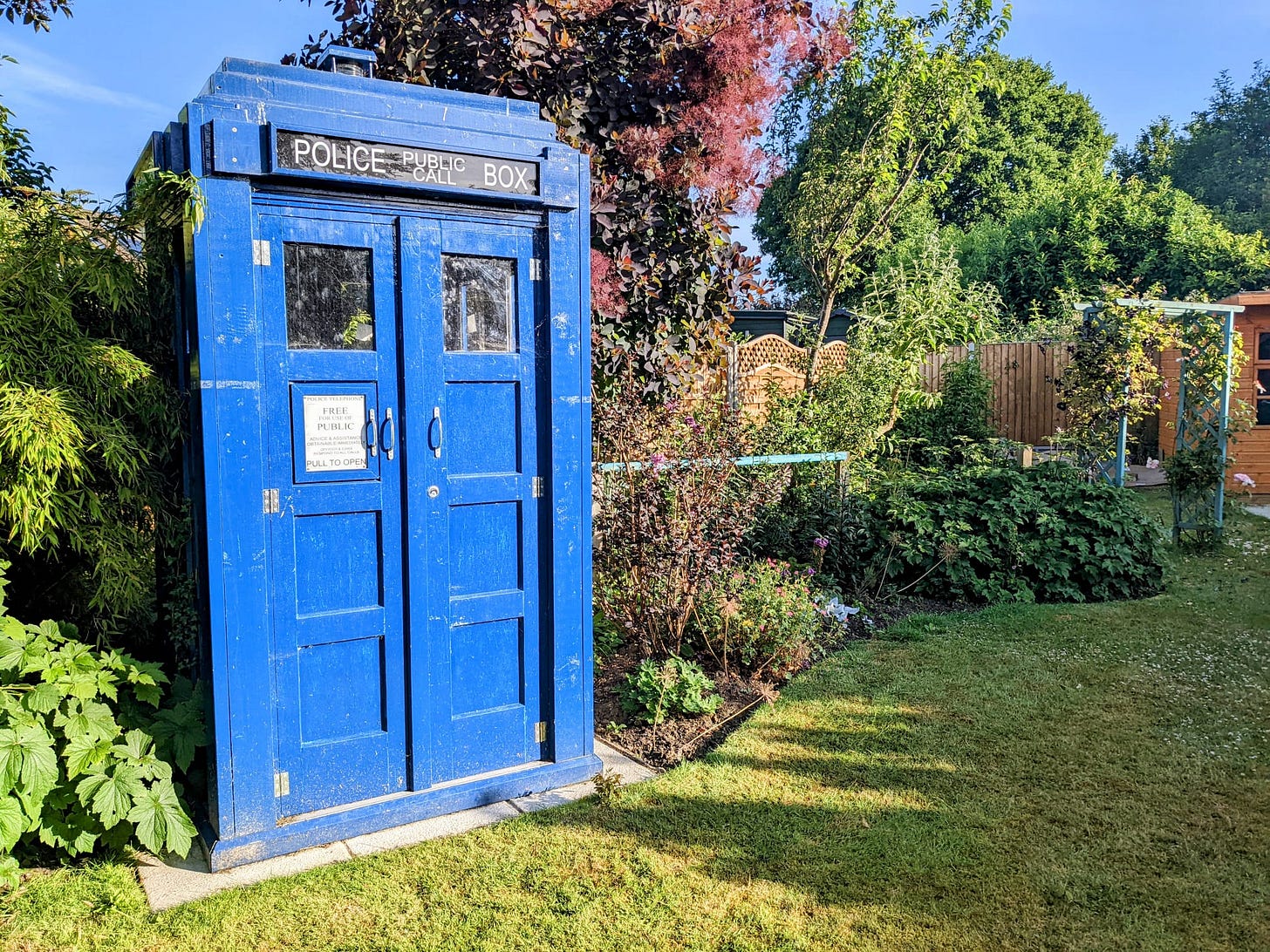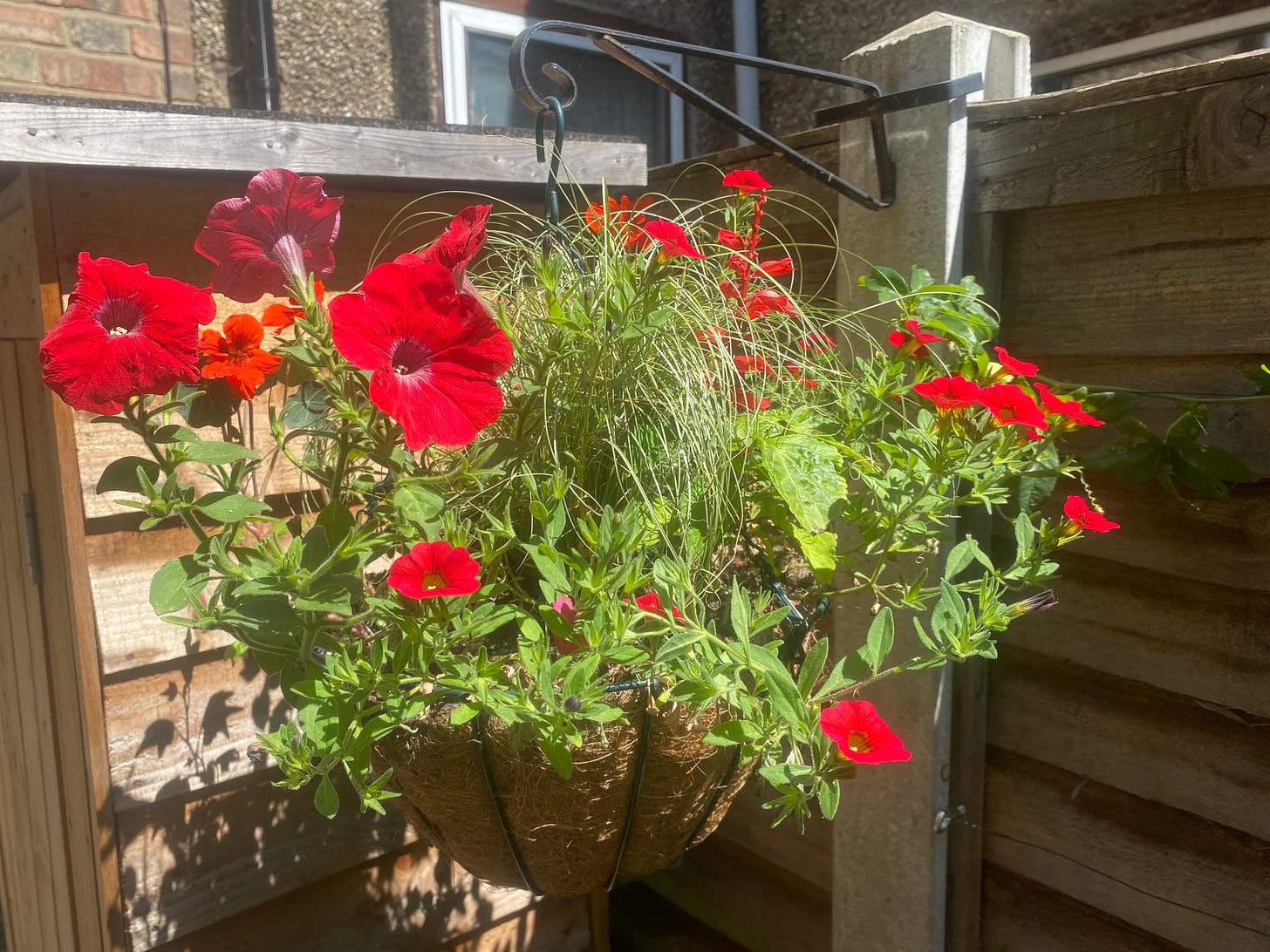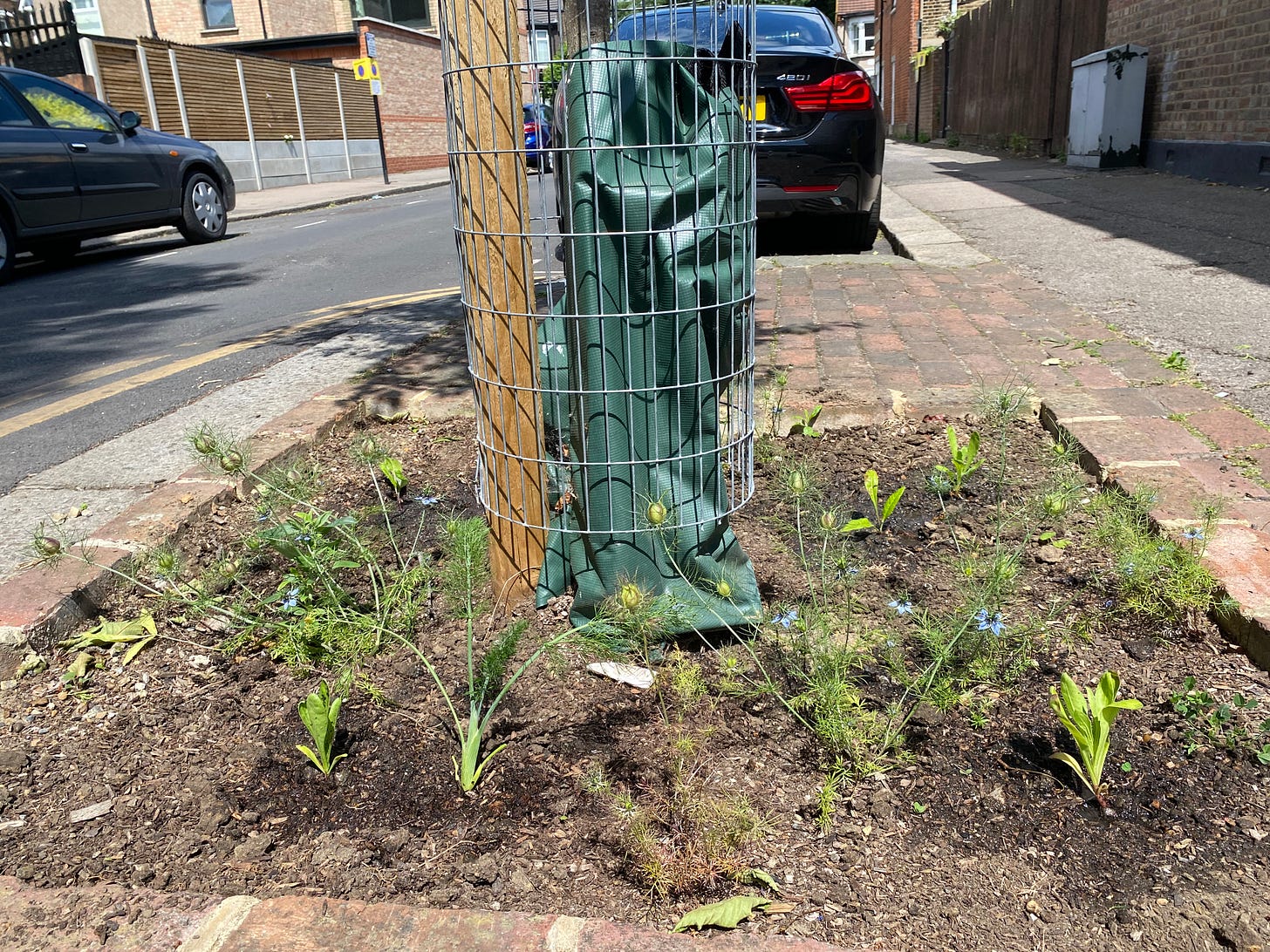An apology, going guerrilla, and more!
Featuring a TARDIS, an unexpected win, some rebel plants, and a killer car park planting combo
Today’s edition of The Earthworm is brought to you from…. the past! Not the very distant past, mind: only last Friday.
All being well, right now – as in, when you’re reading this, not when I’m writing it – I am somewhere on the eastern seaboard of the United States, staying with some very excellent friends. Later this week or early next, I will share photos and findings from my stateside travels, but for now, come with me on a voyage through time and space and plants…
First: an apology
You may recall that, as part of my recent round-up of this year’s Gardeners’ World Live, I mentioned the inordinate amount of BBC memorabilia littered about the showground – set-dressing as part of the broadcaster’s centenary celebrations. You may also recall that to illustrate this round-up, I included a photo from the show of a TARDIS (as seen on TV’s Dr Who), and that I dismissively reduced such displays to little more than “a popular photo opp”. The implication being that no-one could possibly want one of these things in their real-life garden.
Well, readers, I stand corrected. Thank you to subscriber and professional gardener Frances Bogie, who runs Gemini Garden Design and Maintenance, for sharing the below photo, taken in one of her client’s gardens. The client in question is a Design & Technology teacher, and has painstakingly recreated a full-sized TARDIS in his back garden, which is now the focal feature around which Frances has to create all of her planting plans. Good luck with that, Frances!
Good hangs
While we’re taking this little trip down memory lane, you might also recall a feature titled ‘The hanging baskets of Walthamstow’, which I published in late April, and where I talked through my approach to this season’s hanging basket displays.
I’ve come to really appreciate my hanging baskets. They’re a bit old-fashioned, a bit twee, I know, but they make such good use of vertical space, and add buckets – or at least baskets – of colour to an otherwise drab sliver of outdoor space at the side of the house.
In two of the three baskets, the headline acts are the pelargoniums, which are currently covered in flowers and quite thriving in their elevated positions. The third basket (pictured above) is where I randomly shoved some nasturtiums into the gaps between petunia and calibrachoa, for no other reason than because I had some left over. I said at the time that I was pretty sure that this qualified as “bad design”.
Well, it turns out that it was actually an accidental stroke of genius. OK, maybe not genius, but I hope you’ll agree that it does at least look nice. I hadn’t counted on the zingy almost-orange flowers from the nasturtiums (back left, in the photo) being so close in palette and shape to their co-hangers. The result is a loud and proud bonanza of bugle-shaped blooms, in an uplifting riot of reds.
Going guerrilla
This time, you’re going to have to cast your mind way, way back. In fact, being one of the first posts I ever published on The Earthworm, most subscribers will probably never have seen my confessional seed-shopping post, where I fessed up to having bought several packets of seed despite having no space in the garden in which the grown-up plants might flourish. (Thanks to various late-night phone sessions and magazine giveaways, I’ve actually acquired even more seed since, but let’s not even go there…)
In the end, I managed to squeeze a handful of calendula (pot marigold – bugs go mad for it) into various containers and sunny corners of the beds. They’re just now getting into their delightful flowering stride. Some snapdragons, too, and yarrow, I’ve found little pots for. Still no flowers on either, but largely, I think, because I left it so late to pot them on from their seed trays. My globe thistle seedlings (Echinops ritro ‘Veitch’s Blue’ – stunning, spiky things, when the flowers appear) are the ones I was most looking forward to enjoying in the garden, but the ones I have the least space for.
So what does one do when one has so many seedlings, and such little space? Well, one option is to give plants away to friends and neighbours – which I’ve done previously and will do again. But an alternative solution, and one which I’m dabbling with for the first time, is guerrilla gardening.
Even if you’re unfamiliar with the term, you might be able to intuit what it entails – basically, planting up drab, dreary and forgotten parts of the public realm… without permission! There are examples out there of guerrilla gardeners who have totally transformed their local environments, turning fly-tipped concrete corners into expansive and enchanting meadows. It’s amazing, really. And I’m pleased to report that guerrilla gardening is, so to speak, a growing movement.
My first foray into guerrilla gardening is pictured above. Calendula, echinops and fennel from my garden, alongside some nigella (origin unknown, but very welcome), planted at the base of an amelanchier tree sapling at the end of my road. It has the potential to grow into a really lovely little display, full of colour and buzzing with bees. More likely, it will all shrivel up and die. The soil was solid as a rock – it was a challenge just to get the plants in the ground.
To this end, and to give the plants the best chance of success, I’ve enlisted the help of a neighbour, whose front door faces the tree, to help with the watering. So far, she is doing a sterling job. Reader, I will keep you posted…
Planting combination of the week
In what turned out to be an unintentional theme, both posts from last week revolved around wildflowers, weeds, or otherwise unwanted plants.
I notice these itinerant plants, these paving slab squatters and colonisers-of-cracks, everywhere I go, and more often than not they bring me great joy. Bindweed is a pain in the proverbial to remove from anywhere it isn’t wanted, but you can’t deny that with its trumpety white flower-heads gleaming under the summer sun, as they are at the moment round these parts, it is an attractive addition to the urban landscape.
On the subject of brownfield gardens – or if you’d prefer, scraggy shantytowns of self-sown vegetation – there is a public car park around the corner from my house. For the best part of 18 months, it was home to a Covid test centre. Now, the makeshift medical site has been removed, the cars are back and, much more welcome, so too are the flowers.
There is zero chance that anybody – official, guerrilla or otherwise – planted the stunning combination of shortpod mustard (Hirschfeldia incana) and common mallow (Malva sylvestris) in the kerb-side “border” pictured above. But come on, can you hand-on-heart sit there and describe these particular botanical vagabonds as “weeds”?








Welcome to America! If the winds blow you southeast to Pittsburgh, let me know!
Also, you might have to trademark "Hanging Baskets of Walthamstow" with their novel combinations of petunia, calibrachoa and nasturtiums! Brilliant!
And please keep us posted on that guerrilla gardening in your neighborhood!